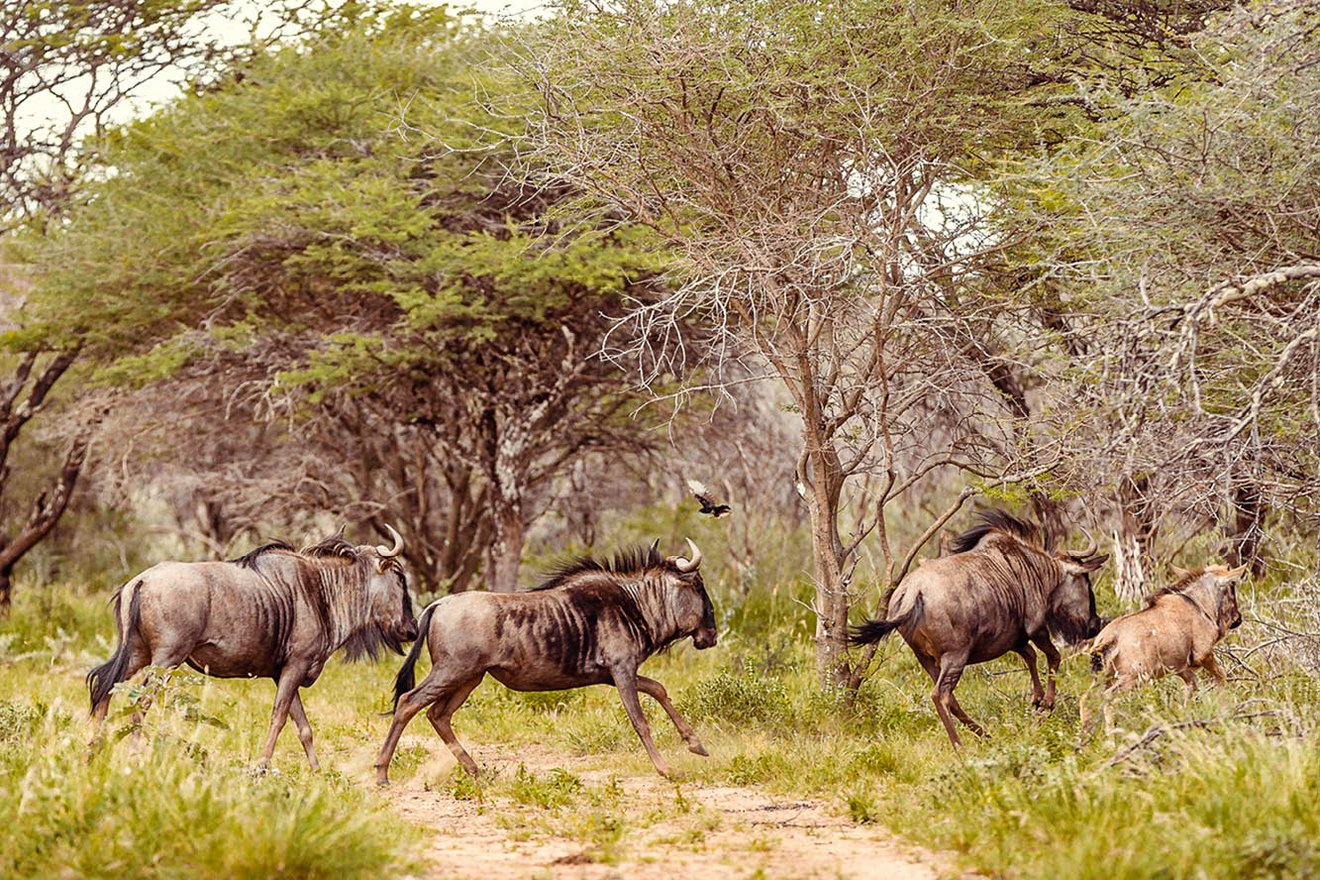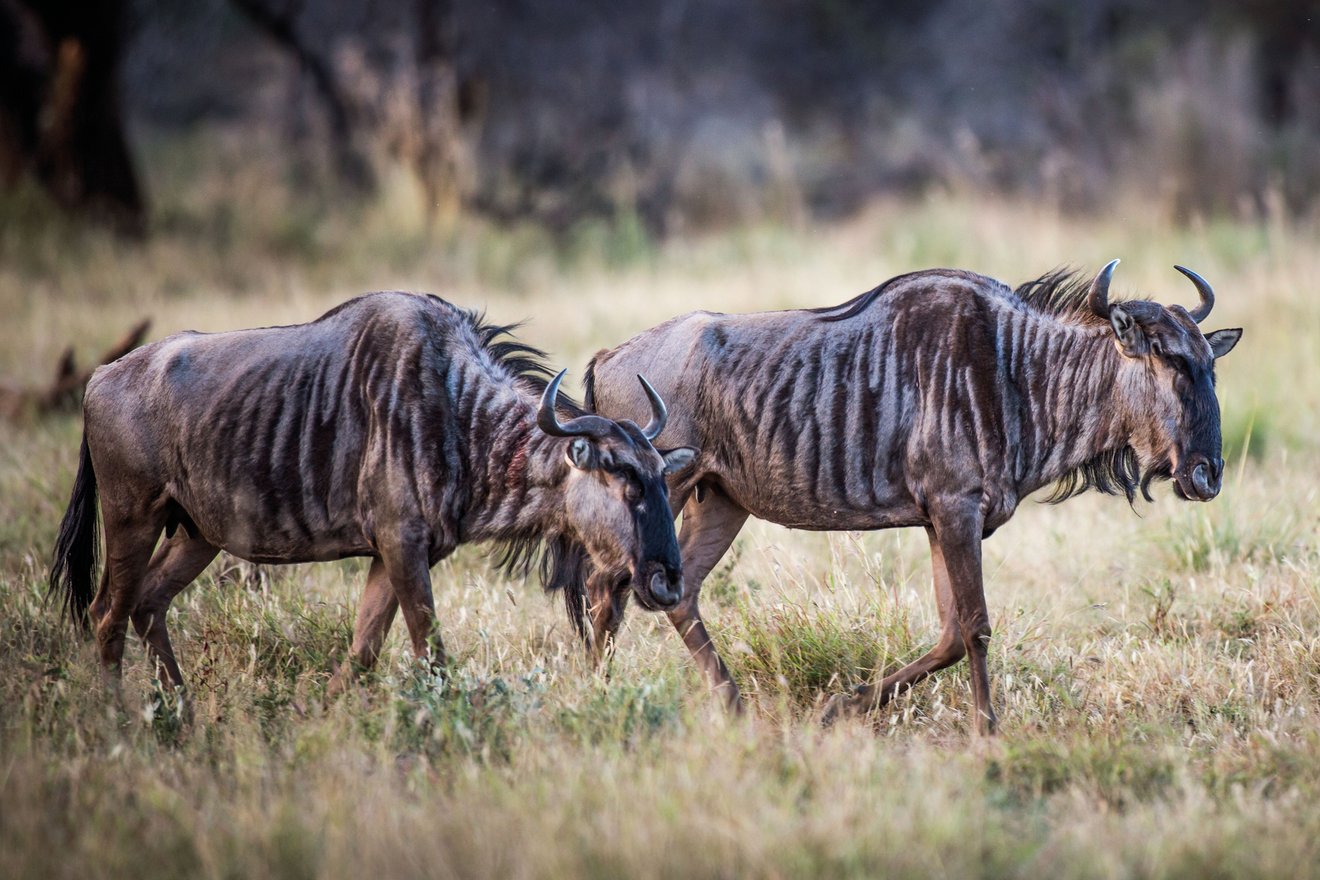Wildebeests, often synonymous with the sprawling savannas of Africa, are best known for their remarkable "Great Migration" across the eastern plains.
At KAMBAKU, you'll find these gentle grass grazers meandering in small herds. Unlike the spectacular migratory journeys witnessed in Tanzania, where thousands of animals embark on a 600-kilometer trek southward, the gnus at KAMBAKU prefer the company of their immediate kin.
Blue Wildebeest
Between Nomads and Homebodies
GUIDE KNOWLEDGE ABOUT THE STRIPED GNU
Both males and females sport horns, with the bull's horns being slightly heavier and spreading wider apart over the ears. Female gnus can be distinguished by their more slender build and a faint reddish hue on their foreheads compared to their male counterparts. Characteristic features include a steeply sloping backline and a rather long, black mane.
Gnus are particular about their food selection, preferring to graze during cooler hours and at night, seeking shelter in shade during the heat. They are dependent on water, drinking daily. While gnus are considered "nomadic" species, they can settle into harem systems, with a dominant bull defending its territory and cows.
Females give birth a few weeks before the rainy season, protecting each other from predator attacks. Gnu calves, precocial from birth, are among the most advanced antelope young. They can stand and follow their mother within minutes of birth, with their light brown fur gradually darkening to the characteristic hue within six months.
Gnus at KAMBAKU
Approximately 1,000 striped gnus inhabit the Kambaku Wildlife Reserve, making them one of the most common antelope species at KAMBAKU, second only to our impala population.
A prominent bull often frequents the vicinity of the lodge. While "Otto" isn't tame, he's bold. He enjoys the company of our horses and a serving of hay amidst good company.


![[Translate to English:] [Translate to English:]](/fileadmin/_processed_/e/b/csm_Header-Kambaku-Safari-Blog-Gnu_b5fdab1171.jpg)

